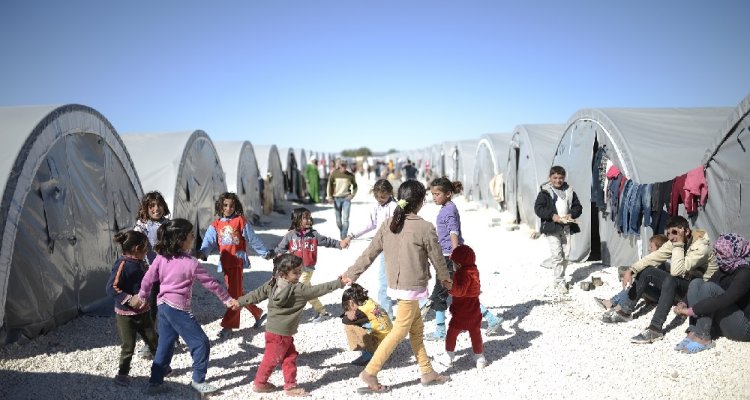
In the spotlight
More sustainable reception facilities for refugees
The number of refugees is growing worldwide. And so are the number and size of locations for refugee reception facilities. These facilities are sometimes the size of cities with thousands of residents. By taking the climate, quality of life and environment into account when setting up these temporary, large-scale reception facilities, the living conditions of both refugees and the local community can be improved.
But how do you design a sustainable refugee camp?
Wageningen has considerable in-house knowledge pertaining to the sustainability of cities. Metropolitan Solutions, as these are known, are design solutions for large cities, in order to make and keep them future-proof and liveable. It is namely expected that around 70% of people will live in urban areas by 2050. This represents a significant change compared to the last century. But how do you keep life in the city healthy and liveable for all these people? How do you design a city so that it is sustainable and climate-resilient?
For this purpose, you need to think in circular terms at urban level. Briefly put: waste is a raw material. So how do you organise a circular city? And how do you ensure that there is adequate, proper and safe food for everyone. It also helps to mobilise governance. Institutes such as municipalities, entrepreneurs and organisations must effectively manage and coordinate these measures with each other.

We will have to apply all our knowledge to effectively manage the growth in the number of refugees.
When setting up refugee camps, the UN refugee organisation UNHCR specifically takes accessibility, the availability of water, drainage and the opportunities for sanitary facilities into consideration. Keeping the environmental impact as low as possible, climate resilience, employment and social interaction are not yet an automatic part of this.
However, sustainable accommodation and temporary reception facilities work very well together. If you design large-scale, temporary accommodation for refugees with the knowledge of sustainable cities as a foundation, this has benefits for both the refugees and local residents. First, it reduces the impact on the environment and nature. Second, the new residents are affected by feelings of isolation, dependence and hopelessness. A sustainable design enhances people’s resilience and gives them the strength to rebuild their lives elsewhere, or if the situation allows, where they came from. That also increases social support for reception facilities and refugee camps.
World Refugee Day
On World Refugee Day, Tuesday 20 June, Wageningen University & Research is organising a symposium in conjunction with Deltares, Relief Base 31, the University of Twente and the Planetary Security Initiative (PSI): Changing Routes 2017. The sustainability of reception facilities is one of the topics of this symposium. Other topics include climate change migration, safety and security and boosting innovation and connectivity.
WUR has taken the initiative for this first annual symposium. ‘We note the emergence of a new paradigm concerning migration and large-scale reception facilities,’ says Marian Stuiver of WUR. She is the programme leader of Metropolitan Solutions and co-initiator of the symposium. ‘Insights on how to deal with this migration are developing. Migratory flows due to disasters, violence and the consequences of climate change are only expected to increase. The question is how to deal with this increase and what geopolitical consequences will unfold.’
‘The Netherlands is one of the major donors of humanitarian aid,’ continues Stuiver. ‘We will have to apply all our knowledge to effectively manage the growth in the number of refugees. We are proficient in themes such as inclusiveness, justice and sustainability. The growth of slum areas, where some migrants end up, is also a social problem. The sustainable development goals of the United Nations (SDGs) are reason alone to aspire to do something about this.’
This calls for close cooperation between social organisations, knowledge institutions, government and the business community. The purpose of the symposium is therefore to work on joint actions and build new coalitions.